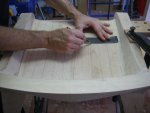Toni Ciuraneta
Member
- Messages
- 5,629
- Location
- Catalunya
making of the chair continuation....
Hi guys.
I apologize for not being regular in posting the progress of my chair but due to my job I had to travel for a few days and I have neither been able to do any woodwork nor tidy up the pictures and put them in an orderly manner.
So what you’ll see now is already outdated, but as you are not supposed to know that it it won’t matter.
After cutting, and shaping the legs, the rails, the seat and the back I started to make the joints to glue the legs to the rails.
I marked two slots both on the rail and the front legs and cut them with a handheld circular saw attached to a table with a toy fence which I shoundn’t have trusted and therefore the slots didn’t come out as straight as they should. I have to make a proper fence or get a table saw!!!!
I have to make a proper fence or get a table saw!!!!
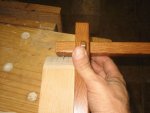
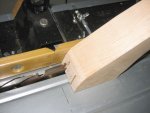
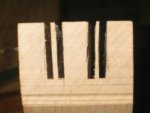
So I pared them down to shape and made two splines out of a pair of walnut samples I begged at the lumberstore,I adjusted them for a tight fit and glued them to the leg.
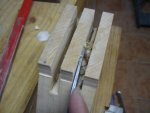
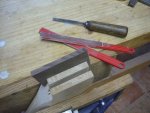
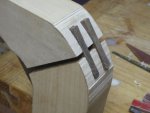
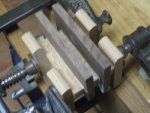
After that, in order to be able to clamp properly the rail and the leg together, I glued two blocks of pine wood to the sides of the leg and the rail with a paper in between aligning theis sides parallel to the side of the miter joint.
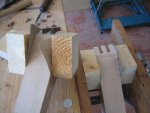

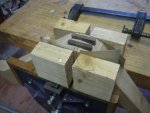
Hi guys.
I apologize for not being regular in posting the progress of my chair but due to my job I had to travel for a few days and I have neither been able to do any woodwork nor tidy up the pictures and put them in an orderly manner.
So what you’ll see now is already outdated, but as you are not supposed to know that it it won’t matter.
After cutting, and shaping the legs, the rails, the seat and the back I started to make the joints to glue the legs to the rails.
I marked two slots both on the rail and the front legs and cut them with a handheld circular saw attached to a table with a toy fence which I shoundn’t have trusted and therefore the slots didn’t come out as straight as they should.
 I have to make a proper fence or get a table saw!!!!
I have to make a proper fence or get a table saw!!!!


So I pared them down to shape and made two splines out of a pair of walnut samples I begged at the lumberstore,I adjusted them for a tight fit and glued them to the leg.




After that, in order to be able to clamp properly the rail and the leg together, I glued two blocks of pine wood to the sides of the leg and the rail with a paper in between aligning theis sides parallel to the side of the miter joint.



Last edited:

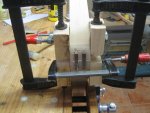
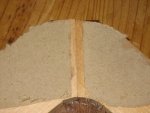

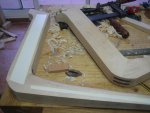
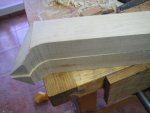


 I was just thinking that if you clamped a block on either side of the rail and leg pieces at an angle that would let the blade run properly you might could have used your bandsaw to cut the mortises,
I was just thinking that if you clamped a block on either side of the rail and leg pieces at an angle that would let the blade run properly you might could have used your bandsaw to cut the mortises, 



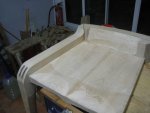


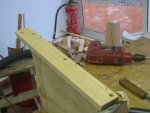


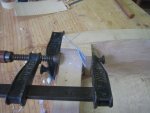
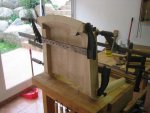
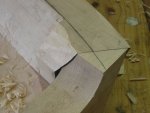
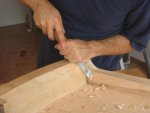
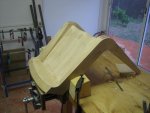
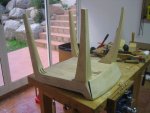

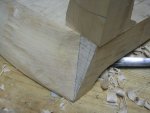
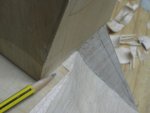
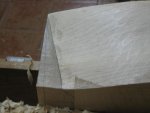
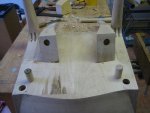
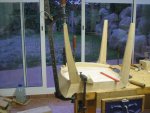
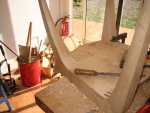
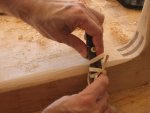

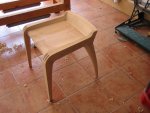

 I can't wait to see it when it's finished. Thanks for taking the time to document it as you did it.
I can't wait to see it when it's finished. Thanks for taking the time to document it as you did it. 



